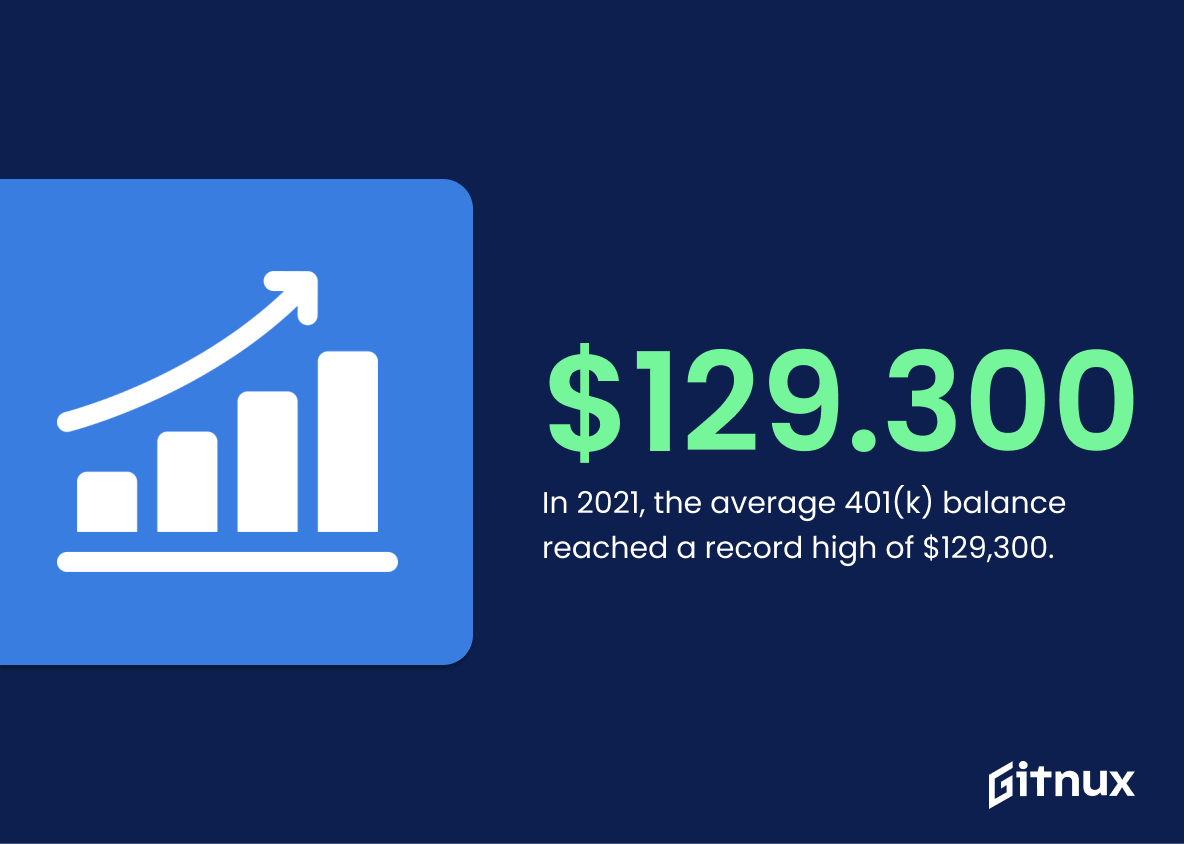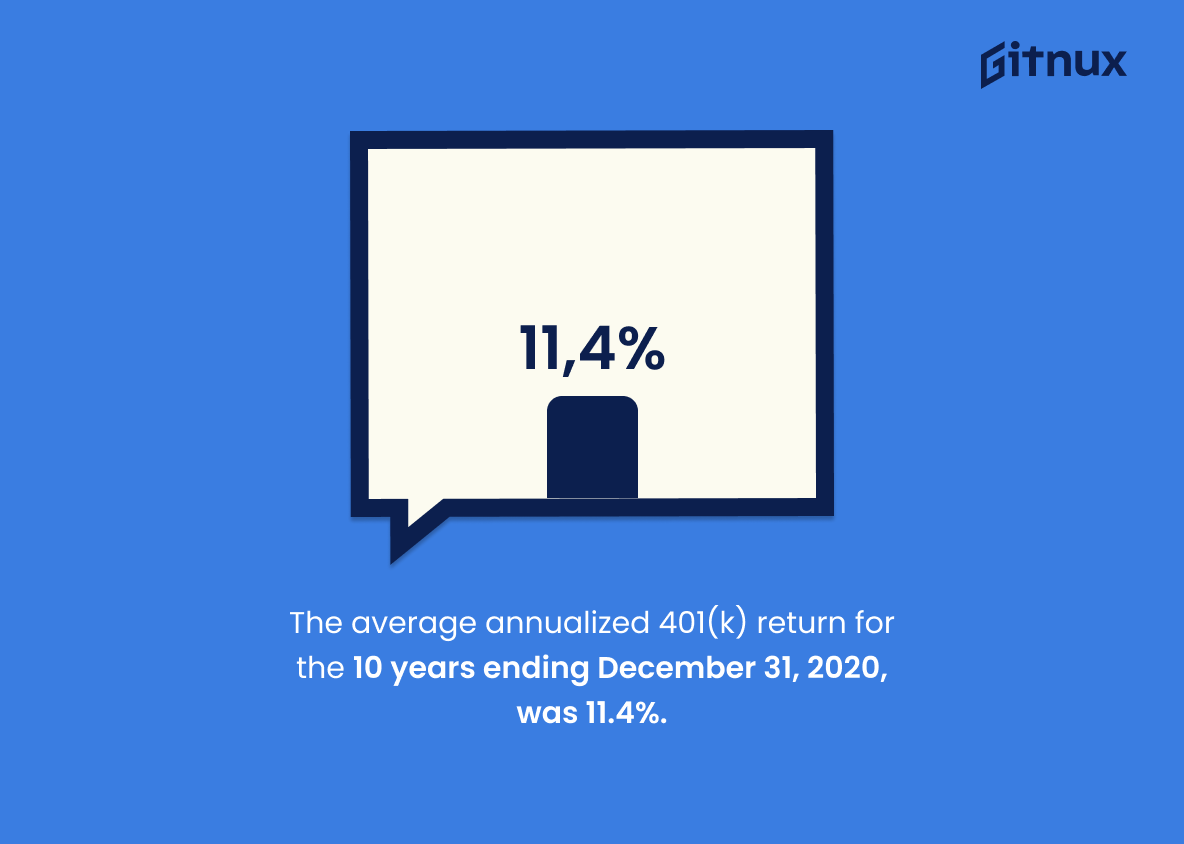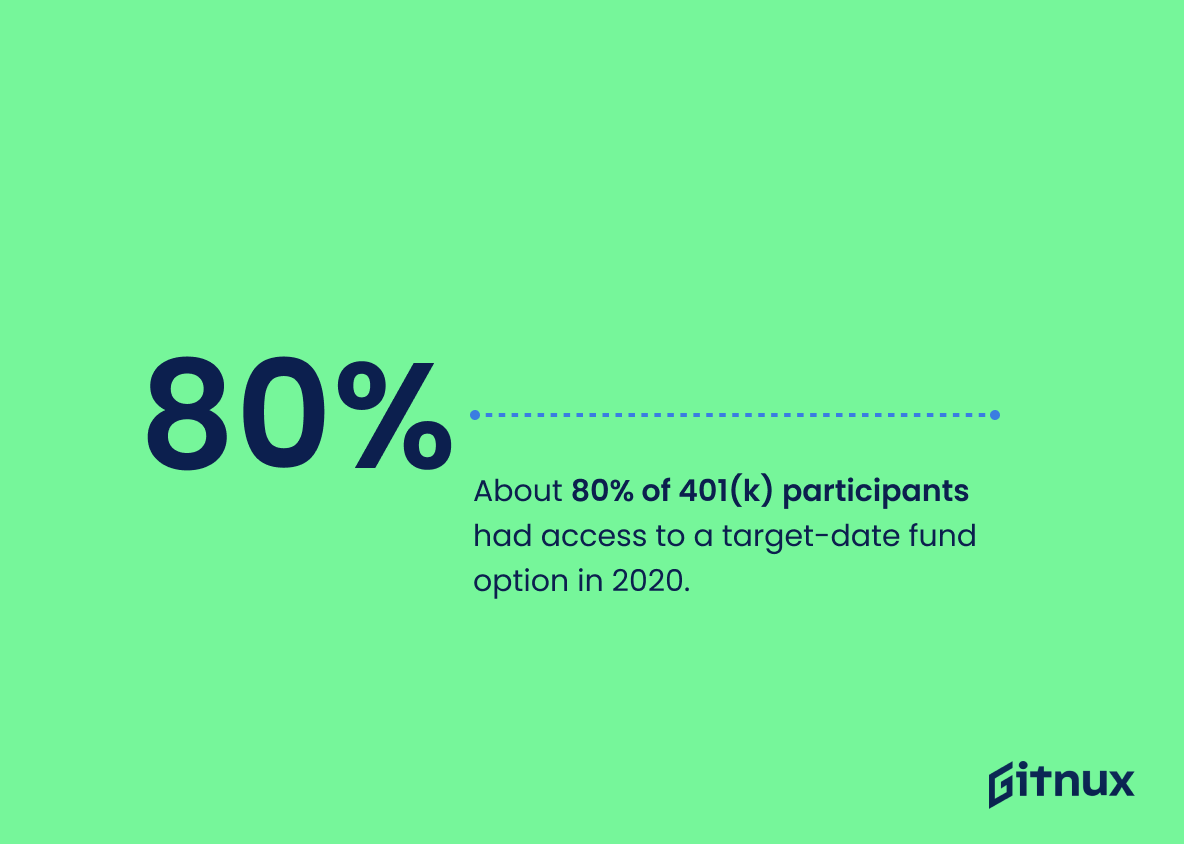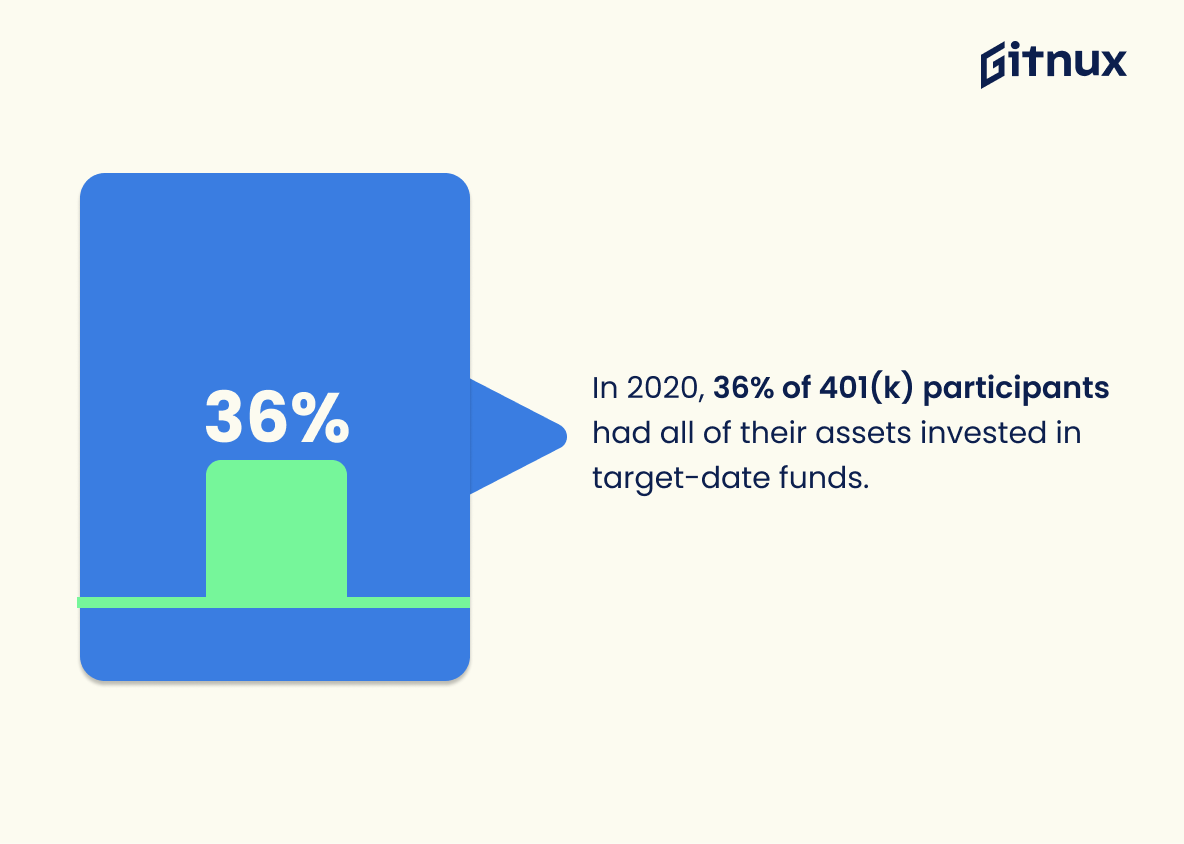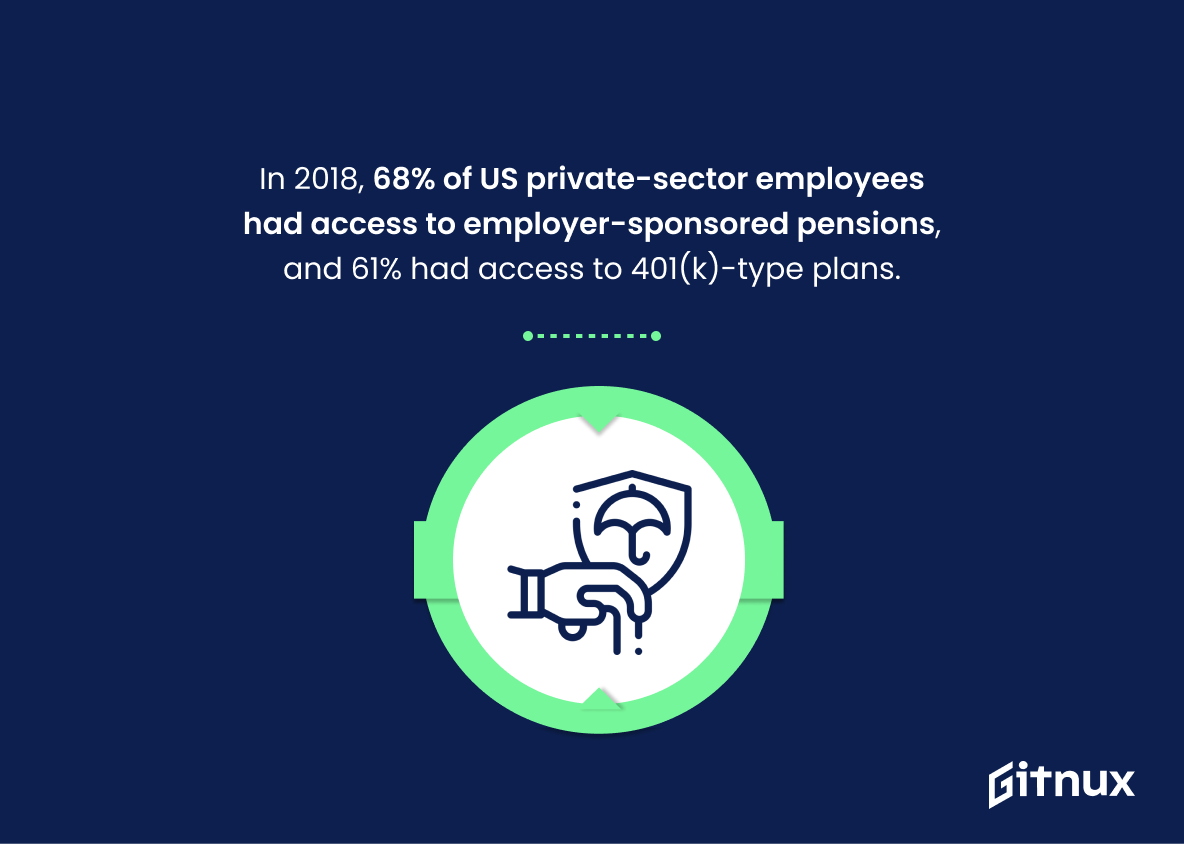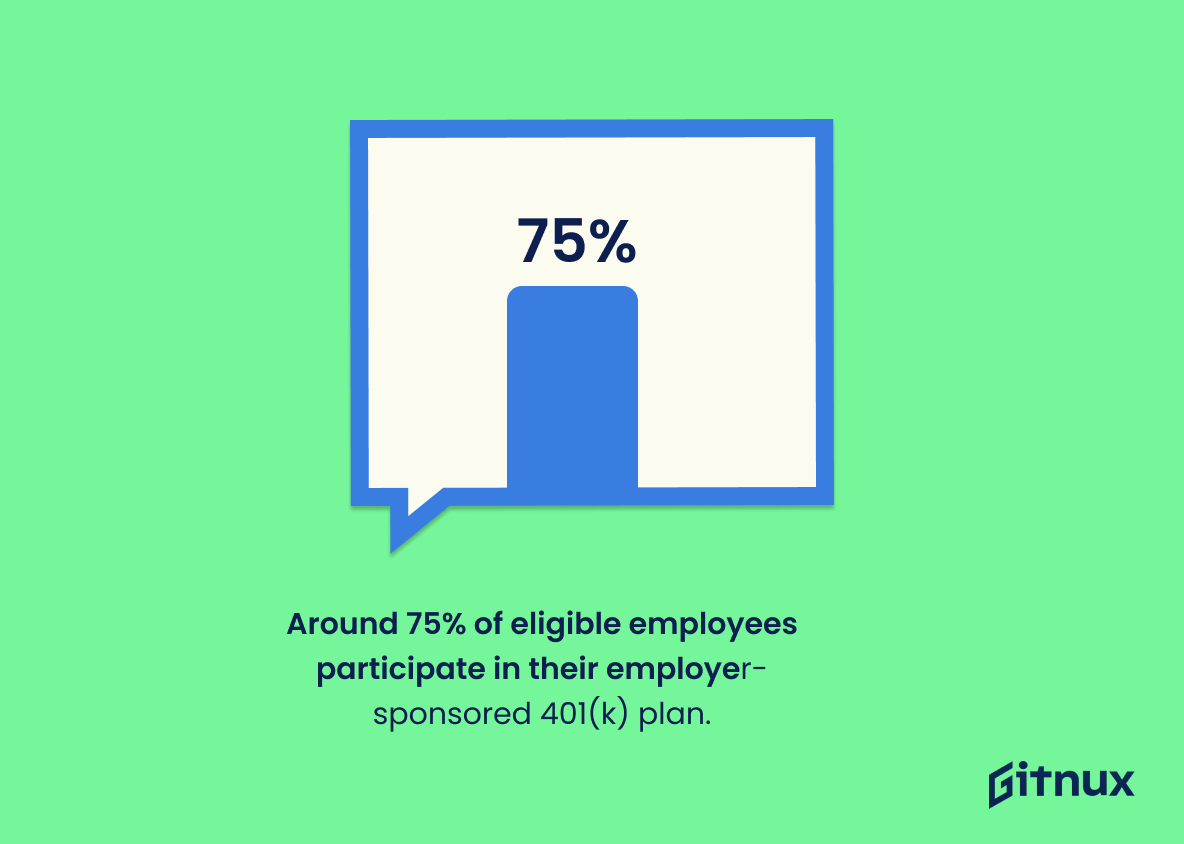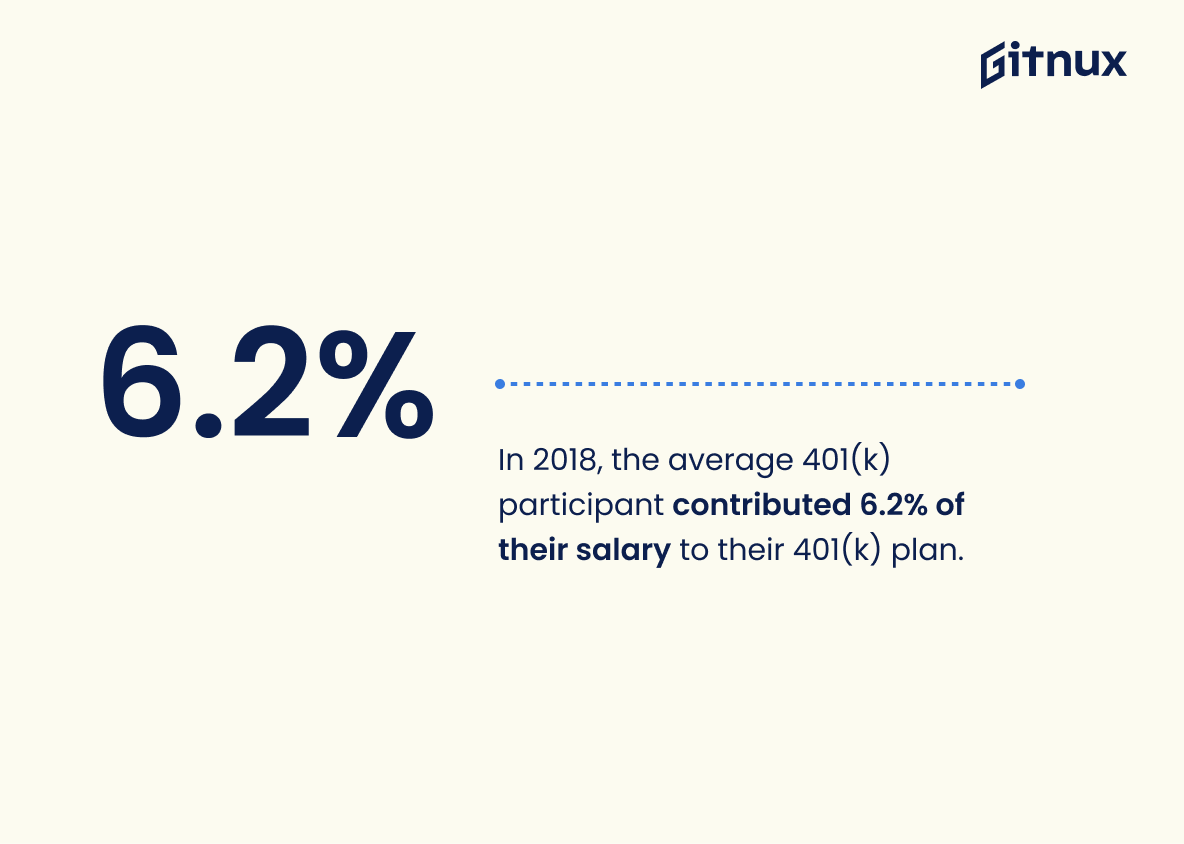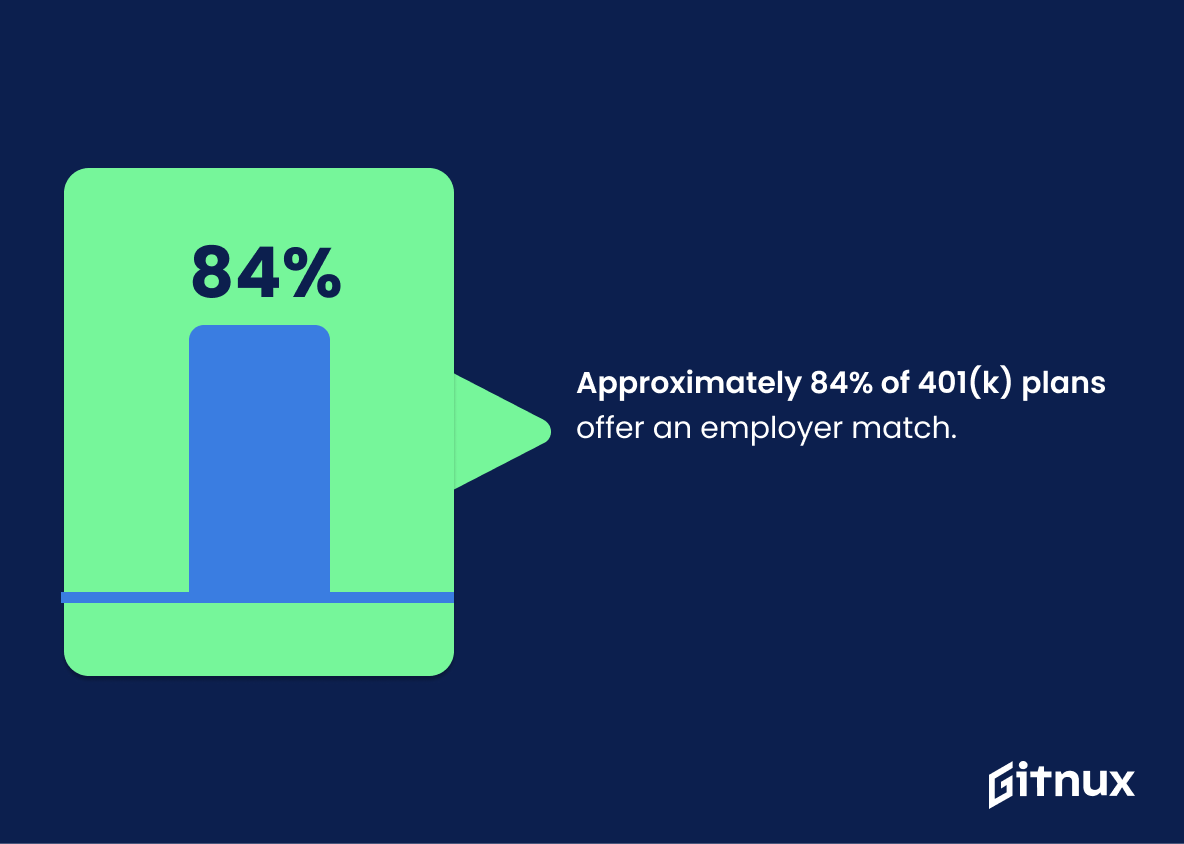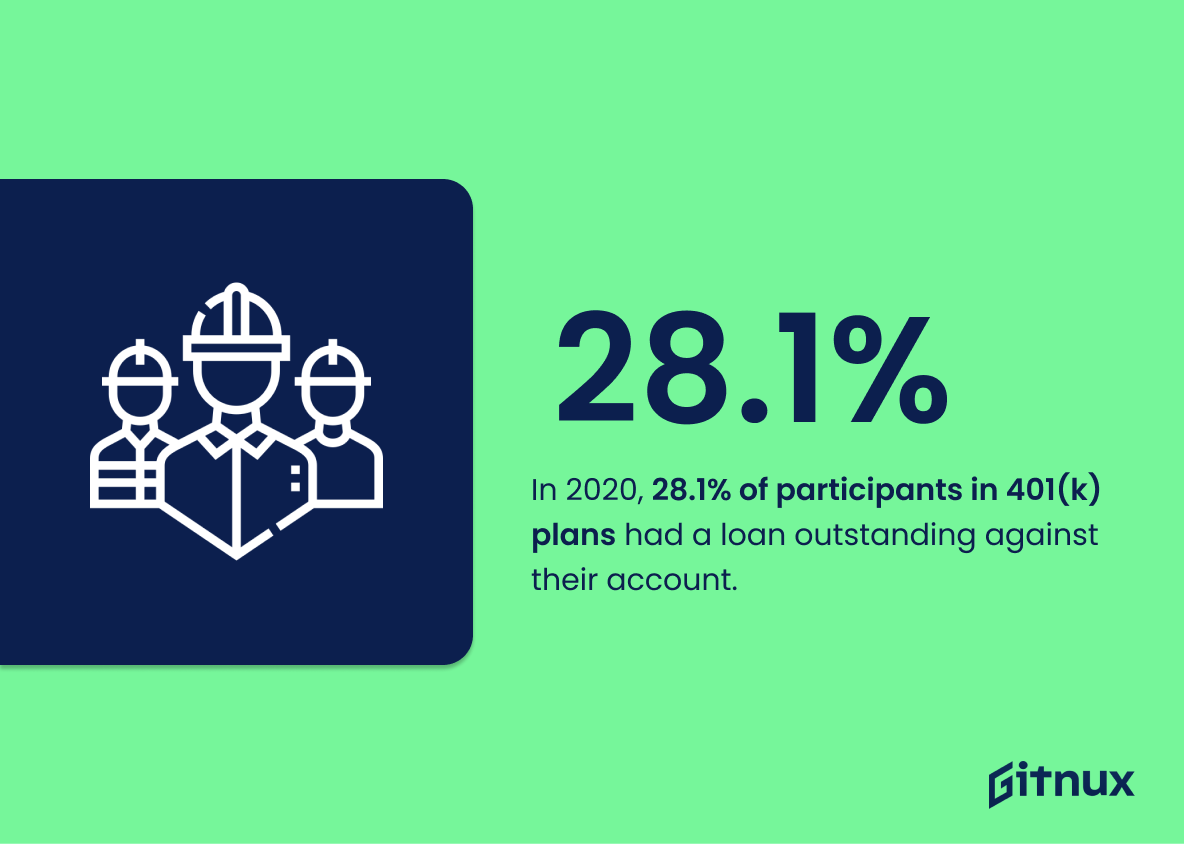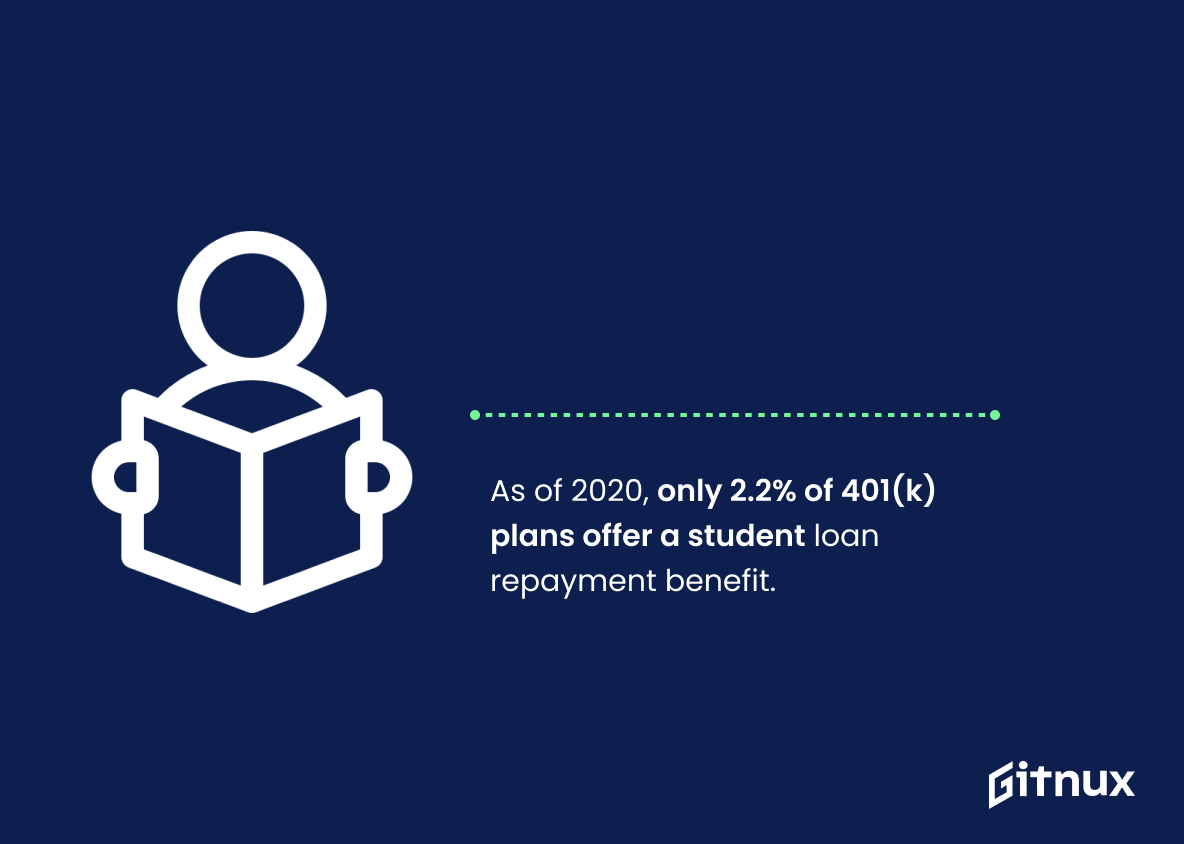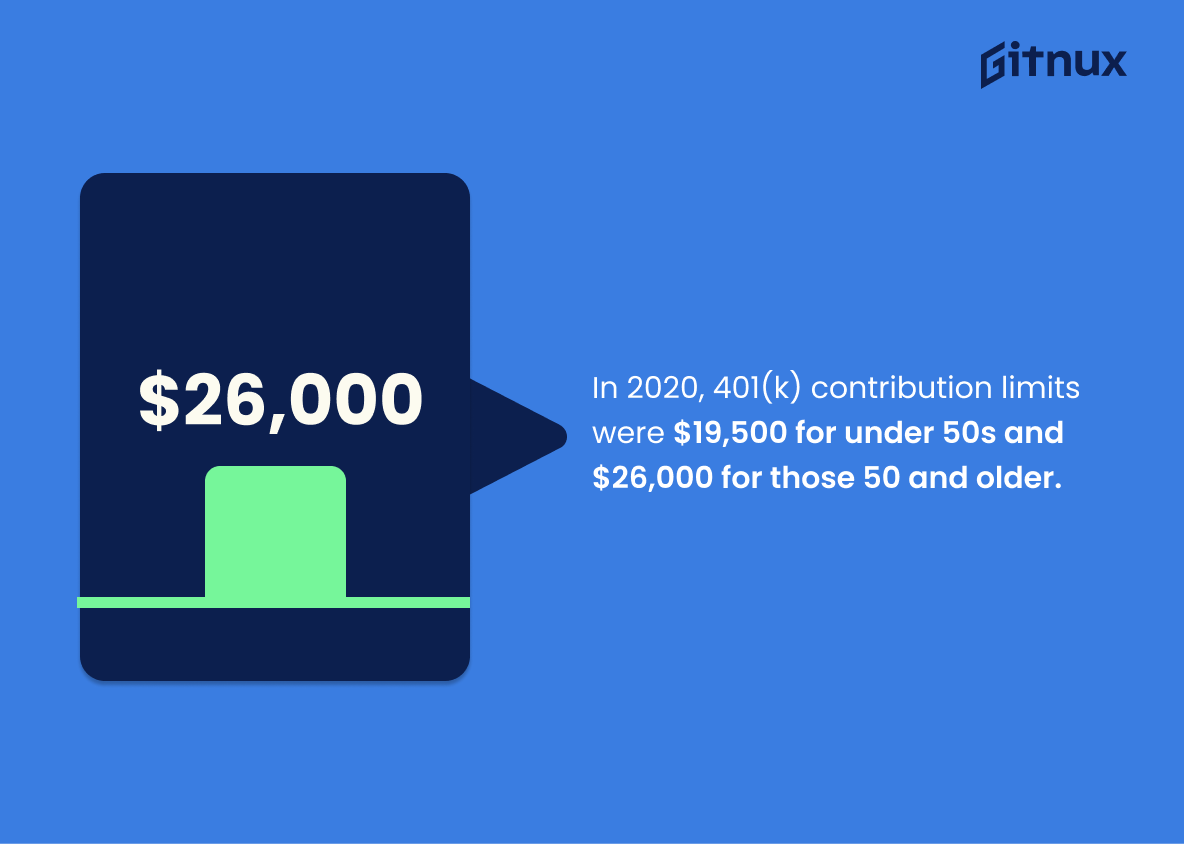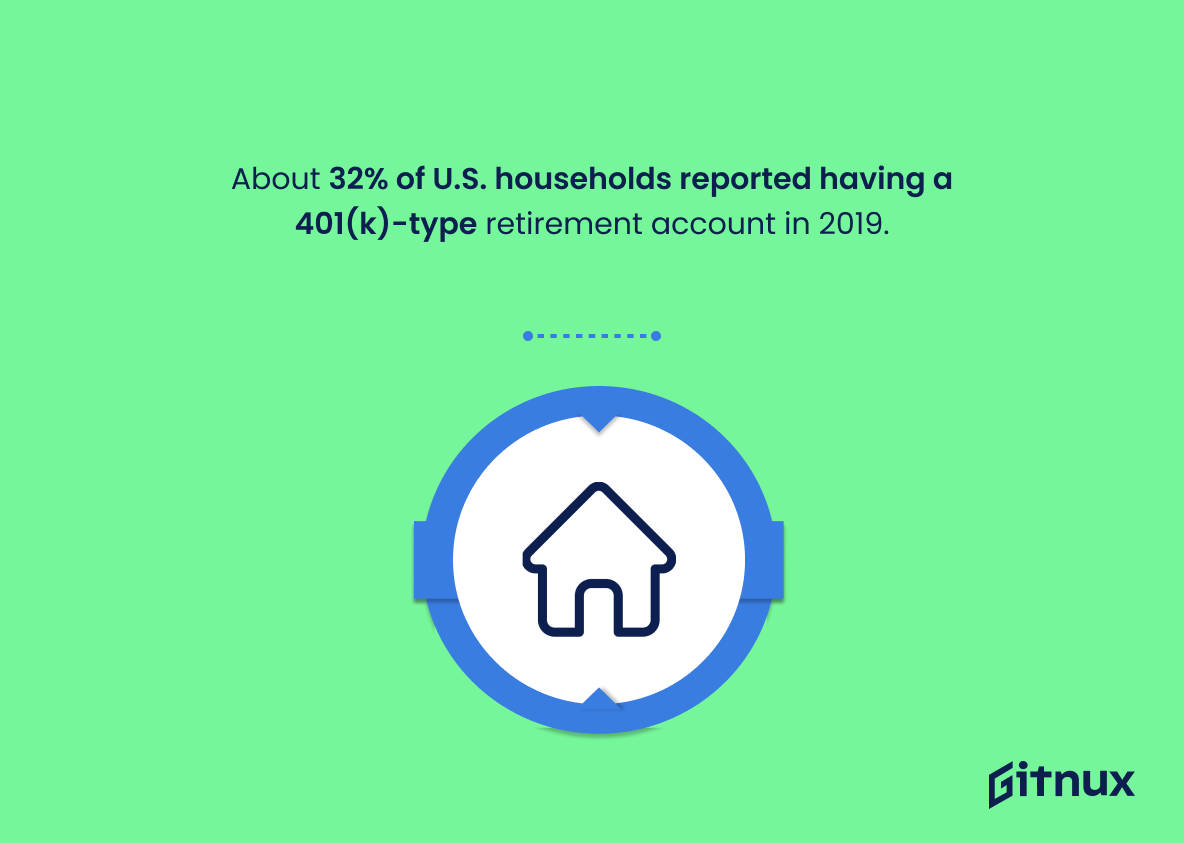The 401(k) plan is one of the most popular retirement savings vehicles in the United States. As of 2020, about 58 million American workers were active participants and total assets reached $6.7 trillion. The average balance was a record high at $129,300 with an annualized return rate of 11.4%. Access to target-date funds has become increasingly common with 80% having access and 36% investing all their assets into them. Private sector establishments had 68% offering pension plans while 61% offered 401(k)-type plans; however only 46% of Generation Z workers have access to these types of accounts through their employer. Around 75 percent participate when eligible but contribute on average 6.2%, although 84 percent offer an employer match option as well as other benefits such as student loan repayment (3%) or cryptocurrency investment options (3%). Unfortunately 28 percent still have loans outstanding against their account which can lead to substantial taxes if cashed out upon leaving a job (30%). Contribution limits for 2021 are set at $19,500 for those under 50 and $26,000 for those over 50 years old while 32 percent reported having a 401(k)-type retirement account in 2019 – mostly small businesses representing 87 %of plans with fewer than 100 participants each year since 2010 where women’s balances increased from 62K to 81K dollars respectively . Finally 8 % automatically enroll employees upon joining the company making it easier than ever before to start saving towards your future today.
This statistic is a powerful indicator of the importance of 401Ks in the lives of American workers. It shows that a large portion of the workforce is actively taking advantage of the benefits of 401Ks, which can help them save for retirement and other long-term financial goals. This statistic is a testament to the effectiveness of 401Ks in helping people plan for their future.
In 2020, the total assets in 401(k) plans reached $6.7 trillion.
This statistic is a testament to the power of 401(k) plans as a retirement savings vehicle. It shows that more and more people are taking advantage of the tax benefits and long-term growth potential of these plans, and that they are becoming an increasingly important part of retirement planning. This is an encouraging sign for those looking to secure their financial future.
401K Statistics Overview
In 2021, the average 401(k) balance reached a record high of $129,300.
This record-breaking statistic is a testament to the success of 401(k) plans in helping individuals save for retirement. It shows that more and more people are taking advantage of the benefits of 401(k)s and are investing in their future. This is an encouraging sign for those looking to secure their financial future and highlights the importance of taking advantage of 401(k) plans.
The average annualized 401(k) return for the 10 years ending December 31, 2020, was 11.4%.
This statistic is a powerful indicator of the success of 401(k) investments over the past decade. It shows that 401(k)s have been a reliable source of returns for investors, providing an average of 11.4% annually. This is an important piece of information for anyone considering investing in a 401(k) plan, as it demonstrates the potential for long-term growth.
About 80% of 401(k) participants had access to a target-date fund option in 2020.
This statistic is significant in the context of 401K Statistics because it highlights the prevalence of target-date funds as an option for 401(k) participants. It shows that the majority of 401(k) participants have access to a target-date fund, which can be a great way to diversify their retirement savings and ensure that their investments are tailored to their retirement goals.
In 2020, 36% of 401(k) participants had all of their assets invested in target-date funds.
This statistic is a telling indication of the growing popularity of target-date funds among 401(k) participants. It shows that more and more people are recognizing the benefits of these funds, such as their ability to provide a diversified portfolio and their automatic rebalancing feature. This is an important trend to note, as it suggests that 401(k) participants are becoming more savvy about their retirement savings.
In 2018, 68% of all employees at private-sector establishments in the United States had access to employer-sponsored pension plans, and 61% had access to 401(k)-type plans.
This statistic is a powerful indicator of the prevalence of 401K-type plans in the United States. It shows that the majority of private-sector employees have access to these plans, which can be a great way to save for retirement. This statistic is important to consider when discussing 401K statistics, as it provides a snapshot of the current state of retirement savings in the US.
Only 46% of Generation Z workers have access to a 401(k) plan through their employer.
This statistic is a stark reminder of the financial insecurity that Generation Z workers face. With only 46% of them having access to a 401(k) plan through their employer, it is clear that many of them are missing out on the opportunity to save for their future. This lack of access to a 401(k) plan could have long-term implications for their financial security and retirement planning.
Around 75% of eligible employees participate in their employer-sponsored 401(k) plan.
This statistic is a testament to the importance of 401(k) plans in the lives of employees. It shows that the majority of employees recognize the value of investing in their future and are taking advantage of the opportunity to do so. This statistic is a powerful reminder of the importance of planning for retirement and the need for employers to provide their employees with the resources to do so.
In 2018, the average 401(k) participant contributed 6.2% of their salary to their 401(k) plan.
This statistic is a telling indication of the importance of 401(k) plans in the lives of many Americans. It shows that people are taking their retirement savings seriously and are actively contributing to their 401(k) plans. This is an encouraging sign that people are taking steps to ensure their financial security in the future.
Approximately 84% of 401(k) plans offer an employer match.
This statistic is significant in the context of 401K Statistics because it highlights the importance of employer contributions to retirement savings. It demonstrates that the majority of employers are willing to invest in their employees’ financial futures by offering a matching contribution to their 401(k) plans. This is a great incentive for employees to save for retirement, as it allows them to maximize their savings and take advantage of the employer match.
As of 2021, only 3% of 401(k) plans offer a cryptocurrency investment option.
This statistic is a telling indication of the current state of 401(k) plans and their lack of cryptocurrency investment options. It highlights the fact that, despite the growing popularity of cryptocurrencies, 401(k) plans have yet to catch up with the trend. This could be a missed opportunity for investors who are looking to diversify their portfolios and take advantage of the potential benefits of cryptocurrency investments.
In 2020, 28.1% of participants in 401(k) plans had a loan outstanding against their account.
This statistic is a stark reminder of the financial struggles many people are facing. It highlights the fact that many individuals are having to borrow against their 401(k) plans in order to make ends meet, which can have long-term consequences for their retirement savings. This statistic is a powerful reminder of the importance of financial planning and saving for retirement.
Around 30% of people who leave their jobs cash out their 401(k) accounts, which can lead to substantial taxes and penalties.
This statistic is a stark reminder of the potential consequences of cashing out a 401(k) account. Not only can it lead to hefty taxes and penalties, but it can also mean a significant loss of retirement savings. This is an important point to consider when discussing 401K Statistics, as it highlights the importance of making informed decisions when it comes to retirement planning.
As of 2020, only 2.2% of 401(k) plans offer a student loan repayment benefit.
This statistic is a stark reminder of the lack of access to student loan repayment benefits for 401(k) plan holders. It highlights the need for more employers to offer this type of benefit to their employees, as it can help them pay off their student loans faster and save money in the long run.
In 2020, 401(k) contribution limits reached $19,500 for those under 50 and $26,000 for those 50 and older.
This statistic is a crucial piece of information for anyone looking to maximize their 401(k) contributions. It provides a clear understanding of the maximum amount that can be contributed to a 401(k) plan, depending on the age of the individual. This knowledge can help individuals make informed decisions about their retirement savings and ensure they are taking full advantage of the benefits of a 401(k) plan.
About 32% of U.S. households reported having a 401(k)-type retirement account in 2019.
This statistic is a telling indication of the prevalence of 401(k)-type retirement accounts in the United States. It demonstrates that a significant portion of households are taking advantage of the benefits of these accounts, which can help them save for retirement and build a secure financial future. This statistic is an important reminder of the importance of planning for retirement and taking advantage of the available options.
Small businesses represent a large portion of the 401(k) market with 87% of plans having fewer than 100 participants.
This statistic is a powerful reminder of the importance of 401(k) plans for small businesses. It highlights the fact that small businesses are a major player in the 401(k) market, with the majority of plans having fewer than 100 participants. This is significant because it shows that small businesses are taking advantage of the benefits of 401(k) plans, such as tax savings and retirement savings, and are helping their employees prepare for the future.
In 2020, the average 401(k) account for women held $81,700, compared to $62,280 in 2010.
This statistic is a powerful indicator of the progress women have made in building their retirement savings over the past decade. It shows that women have made significant strides in closing the gender gap in 401(k) savings, and that they are now better positioned to enjoy a secure retirement. This is an encouraging sign for women and a reminder of the importance of saving for retirement.
As of 2020, only 8% of U.S. employers automatically enroll employees in a 401(k) plan upon joining the company.
This statistic is a stark reminder of how few employers are taking the initiative to ensure their employees are saving for retirement. It highlights the need for employees to be proactive in understanding their 401(k) options and taking the necessary steps to ensure they are saving for their future.
Conclusion
The statistics presented in this blog post demonstrate the importance of 401(k) plans for American workers. As of 2020, 58 million Americans were active participants and total assets reached $6.7 trillion. The average balance was a record high at $129,300 with an annualized return rate of 11.4%. Target-date funds are popular among 401(k) participants as 80% had access to them and 36% invested all their assets into target-date funds. Private sector establishments offer pension plans to 68% of employees while only 46% have access through employers for Generation Z workers. Around 75% participate when eligible and contribute 6.2%, often receiving employer matches which 84 percent provide on average; however, cryptocurrency investment options remain rare with 3%. Loans against accounts are common but can be costly if cashed out upon leaving jobs (30%). Limits increased in 2020 reaching up to $26,000 per year depending on age group while small businesses represent 87 percent of the market overall – women’s balances increasing from 2010 ($62K) to 2020 ($81K). Automatic enrollment is still low at 8%. These facts show that although there is room for improvement across many areas related to 401(k), they continue being one of the most important retirement savings vehicles available today
References
0. – https://www.ssa.gov
1. – https://www.ici.org
2. – https://www.bls.gov
3. – https://www.businessinsider.com
4. – https://www.pwc.com
5. – https://www.planadviser.com
6. – https://www.forbes.com
7. – https://www.cnbc.com
8. – https://www.bankrate.com
9. – https://www.shrm.org
10. – https://www.callan.com
11. – https://www.money.com
12. – https://www.federalreserve.gov
13. – https://www.fidelity.com
14. – https://www.irs.gov
